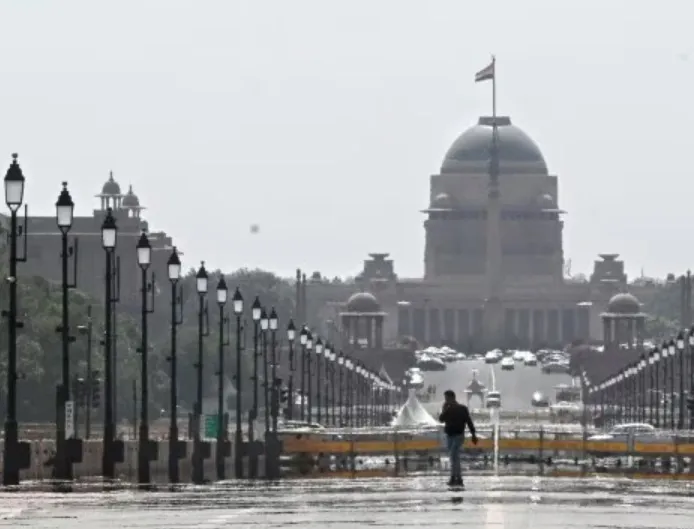What’s in today’s article?
- Why in News?
- What are Heat waves?
- Why heatwaves have become more deadly?
- What are the threats Posed by heatwaves?
- Building Resilience to Extreme Heat
Why in News?
Large parts of the country are witnessing a searing and longer-than-usual heatwave, with record-breaking day temperatures. Over the past few days, the heat has claimed lives in multiple states including Delhi, Bihar, Odisha, and Gujarat.
What are Heat waves?
- About
- A Heat Wave is a period of abnormally high temperatures, more than the normal maximum temperature.
- Qualitatively, heat wave is a condition of air temperature which becomes fatal to human body when exposed.
- Quantitatively, it is defined based on the temperature thresholds over a region in terms of actual temperature or its departure from normal.
- Criteria
- As per IMD, heat wave is considered if maximum temperature of a station reaches at least 40°C or more for Plains and at least 30°C or more for Hilly regions.
- IMD uses following criterion to declare the occurrence of heat wave in the region:
- Based on Departure from Normal Heat Wave:
- Heat Wave – Departure from normal is 4.50°C to 6.40°C;
- Severe Heat Wave: Departure from normal is >6.40degree C
- Based on Actual Maximum Temperature Heat Wave:
- Heat Wave – When actual maximum temperature ≥ 45°C;
- Severe Heat Wave: When actual maximum temperature ≥47
- Based on Departure from Normal Heat Wave:
- If above criteria met at least in 2 stations in a Meteorological sub-division for at least two consecutive days and heat wave occurrence is declared on the second day.
- Heat Wave in coastal region
- When maximum temperature departure is 4.50C or more from normal, Heat Wave may be described provided actual maximum temperature is 370C or more.
Why heatwaves have become more deadly?
- Rising Humidity
- As per the report, the increase in relative humidity in all zones has made heat stress worse in warm-humid and moderate climate zones.
- This increase has also nullified the fall in air temperatures in composite and hot-dry climate zones, especially during monsoons.
- Spike in built-up area and corresponding Urban heat island effect
- An increase in the built-up area in cities is another factor contributing to the urban heatwaves.
- The IPCC Working Group-II highlights that the urban heat island effect causes cities to have higher air temperatures than surrounding areas, particularly at night, which reduces their ability to adapt to climate change.
- Various studies have shown that cities, in particular, are getting warmer and more humid due to urbanization and declining green cover.
- Increase in night temperature
- Various studies found that the difference between day and night temperatures in urban areas has reduced over a period of time.
- These studies also pointed out the fact that an increase in green cover can moderate day-time heat.
- However, it is not that effective in arresting night-time heat due to increased concretization and heat released by these concretes at night.
What are the threats Posed by heatwaves?
- Human Health
- Extreme heat is one of the leading causes of weather-related deaths in many countries.
- In India, on May 31, at least 61 people died from suspected heatstroke across multiple states.
- Among the victims were 23 poll personnel working during the final phase of the Lok Sabha election.
- High humidity and elevated nighttime temperatures are likely key ingredients in causing heat-related illness and mortality.
- Heatwaves are also associated with increases in heat-related illnesses, including cardiovascular and respiratory complications and kidney disease.
- Extreme heat is one of the leading causes of weather-related deaths in many countries.
- Air quality
- In extreme temperatures, air quality is also affected. Hot and sunny days can increase the production of ground-level ozone.
- This ozone is a harmful pollutant that is the main component of smog.
- It can damage the respiratory system and is particularly harmful for those with asthma.
- In addition, greater use of air conditioning requires more electricity which, depending on the electricity source, emits other types of pollution, including particulates that have an impact on air quality too.
- In extreme temperatures, air quality is also affected. Hot and sunny days can increase the production of ground-level ozone.
- Agriculture
- High temperatures can be damaging to agriculture. Plant growth is negatively impacted by high daytime temperatures and some crops require cool night temperatures.
- Heat waves also increase the chances of livestock experiencing heat stress, especially when night time temperatures remain high and animals are unable to cool off.
- Heat waves can exacerbate droughts and wildfires, which can lead to negative impacts on the agriculture sector.
- Energy
- Warmer temperatures affect many aspects of the energy system, including production, transmission, and demand.
- While higher summer temperatures increase electricity demand for cooling, at the same time, they can lower the ability of transmission lines to carry power.
- This can possibly lead to electricity reliability issues like rolling blackouts during heat waves.
- In addition, as rivers and lakes warm, their capacity for absorbing waste heat from power plants declines.
- This can reduce the thermal efficiency of power production.
- This makes it difficult for power plants to comply with environmental regulations regarding the temperature of their cooling water, and could lead to plant shut-downs.
Building Resilience to Extreme Heat
- Identify vulnerable populations and create heat preparedness plans with all residents in mind
- These include steps like opening cooling centers during periods of extreme heat and adopting workplace heat stress standards.
- Installing cool and green roofs and cool pavement to reduce the urban heat island effect.
- Planting trees to provide shade and to cool the air through evapotranspiration.
- Pursuing energy efficiency to reduce demand on the electricity grid, especially during heat waves.
Q.1. What is Urban Heat Island (UHI) effect?
The Urban Heat Island (UHI) effect occurs when urban areas experience higher temperatures than their rural surroundings due to human activities and infrastructure.
Q.2. What is humidity?
Humidity is the amount of water vapor present in the air. It affects how we perceive temperature, as high humidity can make it feel hotter, while low humidity can make it feel cooler.
Source: Warmer nights, rising humidity: Why heatwaves are becoming more deadly | IMD |Centre for climate and energy solution | Live Mint
Last updated on July, 2025
→ UPSC Notification 2025 was released on 22nd January 2025.
→ UPSC Prelims Result 2025 is out now for the CSE held on 25 May 2025.
→ UPSC Prelims Question Paper 2025 and Unofficial Prelims Answer Key 2025 are available now.
→ UPSC Calendar 2026 is released on 15th May, 2025.
→ The UPSC Vacancy 2025 were released 1129, out of which 979 were for UPSC CSE and remaining 150 are for UPSC IFoS.
→ UPSC Mains 2025 will be conducted on 22nd August 2025.
→ UPSC Prelims 2026 will be conducted on 24th May, 2026 & UPSC Mains 2026 will be conducted on 21st August 2026.
→ The UPSC Selection Process is of 3 stages-Prelims, Mains and Interview.
→ UPSC Result 2024 is released with latest UPSC Marksheet 2024. Check Now!
→ UPSC Toppers List 2024 is released now. Shakti Dubey is UPSC AIR 1 2024 Topper.
→ Also check Best IAS Coaching in Delhi















